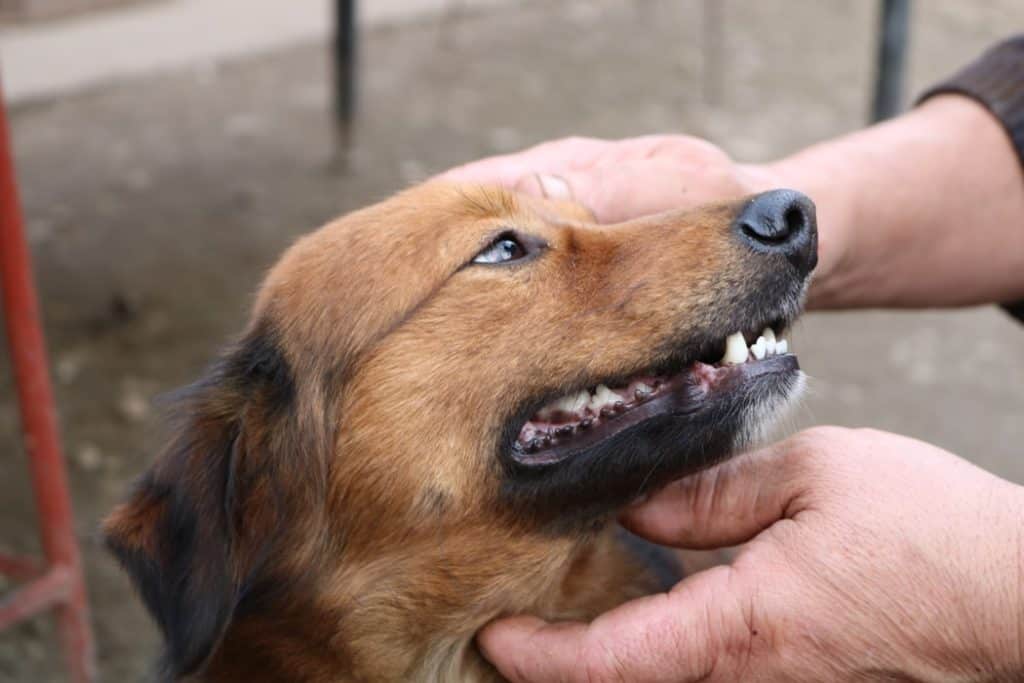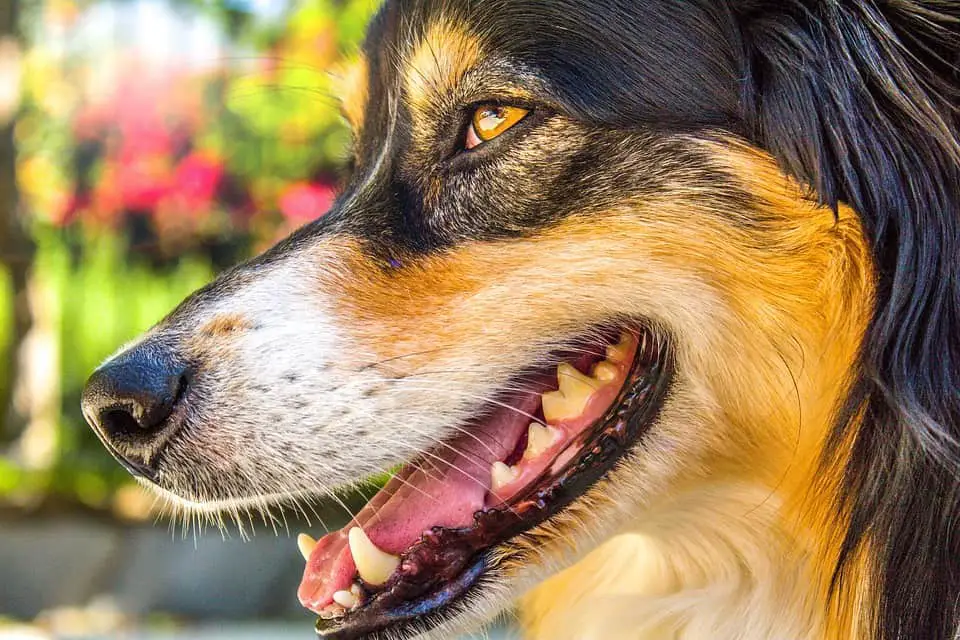Oral hygiene is necessary for humans, and the same goes for your dog. The fact that they are animals does not exempt them from getting serious dental diseases. They can develop swollen gums, painful swallowing, and tooth loss. Although many pet owners usually wonder how often to brush dogs teeth, they tend to overlook this and forget that oral care is important for the overall health of their dogs.
Contents
How Often Should You Clean Your Dog’s Teeth?
Humans are advised to brush daily, if not more than once or twice a day. Just like you do, it is better to clean your dog’s teeth daily to avoid plaque and tartar buildup which can lead to problems like periodontal disease.

Depending on the dog’s breed and age, the frequency of brushing your dog’s teeth might change. Larger breeds might not need as frequent brushing as smaller breeds because the latter are more prone to dental problems. The same goes based on age. Unlike younger dogs that can skip a brush or two each week, older dogs need to have their teeth cleaned more often.
Ideally, the recommended toothbrushing frequency for dogs is daily. Generally, your dog should at least be getting its teeth cleaned twice or three times a week.
How to Brush Your Dog’s Teeth
Brushing your dog’s teeth can be a difficult task during your first attempt. Follow these tips to make the process comfortable for your dog:
Get the Right Supplies for Brushing Your Dog’s Teeth
While brushing your dog’s teeth, you need a pet-safe toothpaste and a pet-friendly toothbrush. Unlike a pet-safe paste, human toothpaste is not good for pets because it has fluoride, which can upset your pet’s stomach.
Pet-safe pastes are safe to swallow as they do not contain foaming agents. They even have peanut butter or poultry flavors to entice pets. For smaller pets, try to brush with a toothbrush that fits on your finger’s end to make maneuvering in their mouth easy, just don’t use baking soda as many people recommend.
Larger pets respond well to bigger toothbrushes with handles as they make reaching the back of their mouth easier.
Conduct Some Test Runs
Once you have essential tools, try to familiarize your dog with the toothbrush. Before using it, ensure your dog is comfortable by lifting up their lips regularly and giving them rewards for cooperating.
Rub a wipe or your finger along their gums and teeth to make your dog get used to having a brush in its mouth. Once they become accustomed to the toothbrush, begin with short brushing sessions before increasing the time gradually.
Position Yourself Comfortably
When you try to brush your dog’s teeth, you may have noticed that it squirms and even gets away. This is because pups won’t sit still for the duration needed to brush. I advise positioning your pet in a way that allows you to hold them in place easily.
For smaller pups, sit next to them or wrap them in a towel and bring them closer to your side by wrapping your arm around their body. This helps keep them still as you work with their head. Similar to smaller pups, sit next to larger pups and wrap your elbow around their head when brushing.
While in this position, use your hand to move their lips so that you brush comfortably. If your puppy is uncomfortable or upset, do not force it to stay as it can feel brushing is a negative experience. If your pup begins fidgeting a lot, allow them to go and try later. Also, be careful with how you’re holding or restraining your pet to prevent neck injury.
Brush Your Dog’s Teeth at Their Gum Line
While opening your dog’s mouth, focus on where their gum line meets their teeth. Also, focus on their back teeth because this is where tartar and plaque accumulate. As you brush your dog’s teeth, target this area with circular motions.
Strike the right balance between being too gentle and brushing too hard. Most dog owners rarely scrub enough to remove plaque buildup. Like our own mouths, plaque removal can be effective if you spend enough time brushing their teeth.
Continue With a Regular Brushing Routine
Although brushing several times every week is crucial to maintaining your pup’s oral hygiene, you can supplement dental care with healthy chews. However, they’re not as efficient as a regular brushing routine because they can only reduce plaque buildup.
How to Make Brushing Easier
Most dogs may not be comfortable while brushing their teeth. So you’ll have to do certain things to make them get accustomed to the process. This not only makes your dog more comfortable with the process but also makes it easier for you
Begin Slowly
Avoid brushing your dog’s teeth quickly. Instead, begin slowly and ensure they’re comfortable with you touching their teeth, gums, as well as lifting their lips. Also, ensure they’re comfortable with the toothpaste taste before attempting to brush. If they cooperate, reward them with lots of praise and treats.
Make Rewards Tasty
Dogs like sweet treats. So if you associate tooth brushing with a sweet reward, your dog will get more comfortable and even love the process. If you have some gauze, dip it in a tasty treat like bone soup or peanut butter. Once your pup realizes this can be a tasty and fun procedure, they may be interested in tooth brushing.
Take Frequent Breaks
Since it might take your pet sometime before getting used to the teeth brushing process, take breaks as you’re getting started, especially if the pup seems uncomfortable.
Choose the Right Time
Brushing your dog’s teeth at the right time is very crucial. You don’t want to brush your dog’s teeth when they’re playing. Instead, brush your dog’s teeth before going to bed or after a walk, when they’re relaxed and calm.
Alternatives to Cleaning Your Dog’s Teeth
If your dog doesn’t want its teeth brushed, there are products you can use to prevent dental disease. There are effective gels, wipes, and water additive that target biofilm, the major cause of dental decay.
Dental chews can also work as some contain enzymes that clean the mouth. However, it’s best if you consult me before giving your dog chews. Also, do not allow your dog to have chews unsupervised as they’re hard and can be a choking hazard.
Whatever dental care products you pick for your dog, ensure they’re approved by the VOHC (Veterinary Oral Health Council). Such products have been screened by a professional for dangerous additives that could impact your dog’s dental health.
Things to Check When Brushing Your Dog’s Teeth
As you’re brushing, look for signs of discomfort, lip injuries, or tooth pain. If your dog pulls away or cries when you touch a certain area, it could be a sign of pain. If your pup shows any sign of discomfort, get them examined by a vet.

Do Dogs Really Need Dental Cleaning?
It is very important for you to not overlook your dog’s dental cleaning. Dogs need it to prevent tooth decay, dental damage, and oral health problems.
How Important Is It to Get Your Dog’s Teeth Cleaned?
If you aren’t convinced with how important it is, research says that around 70% of dogs develop periodontal disease before they even reach the age of 3. If left untreated, this disease makes them more prone to issues with their blood pressure, kidney or liver, cardiovascular diseases, and worse, cancer.
These are just some of the potential health problems you are preventing for your dog. To avoid these, commit to regularly cleaning their teeth and going for a once-a-year dental cleaning and checkup with a veterinarian.
What Happens if You Don’t Get Your Dog’s Teeth Cleaned?
It may be uncomfortable for you and your dog when you initially start cleaning their teeth at home. Be sure to use pet-friendly toothbrushes and enzymatic toothpaste. They’re better than human pastes as they do not contain chemicals that may poison your pet if they swallow any. Hang in there, because you will get used to it at some point.
If you don’t end up getting your dog’s teeth cleaned at all, this could lead to many disadvantages, such as poor tooth care and oral hygiene. At first, it may not be that obvious. But, as the bacteria and tartar build-up in their teeth, your dog may suffer the following:
- Tooth decay
- Loose teeth
- Bad breath from rotten tissues
- Excessive, involuntary drooling
- Painful eating hence losing appetite
- Heart, liver, or kidney diseases
- Bleeding or excessively red gums
A simple oral problem overlooked can cause long-term (and even fatal problems) with your dog’s well-being.
Related Questions
How Can I Clean My Dog’s Teeth Naturally?
To clean your dog’s teeth naturally, add healthy teeth-cleaning foods even without brushing to their diet to scrape plaque off of your puppy’s teeth. You can also use food additives or coconut oil. It can help kill the bacteria that cause gum diseases. Rub it onto their gum or add it to your puppy’s food.
What Foods Clean Dog’s Teeth?
Foods that can clean your dog’s teeth include meats, fruits such as apple and pumpkin slices, and vegetables like carrots. Healthy foods are better than treats and snacks with lots of fats and sugar that can lead to obesity. Quality foods will nourish your dog’s body and strengthen its teeth.
Conclusion
I can’t emphasize enough how important and beneficial it is both for your dog and you as a pet owner to regularly clean their teeth. Ideally, daily. Two or three times each week would do, too. You should also schedule a yearly professional dental cleaning done by a veterinarian. This will help to ensure the prevention of tooth decay, dental damage, and health problems resulting from the buildup of plaque and tartar in your dog’s teeth.
